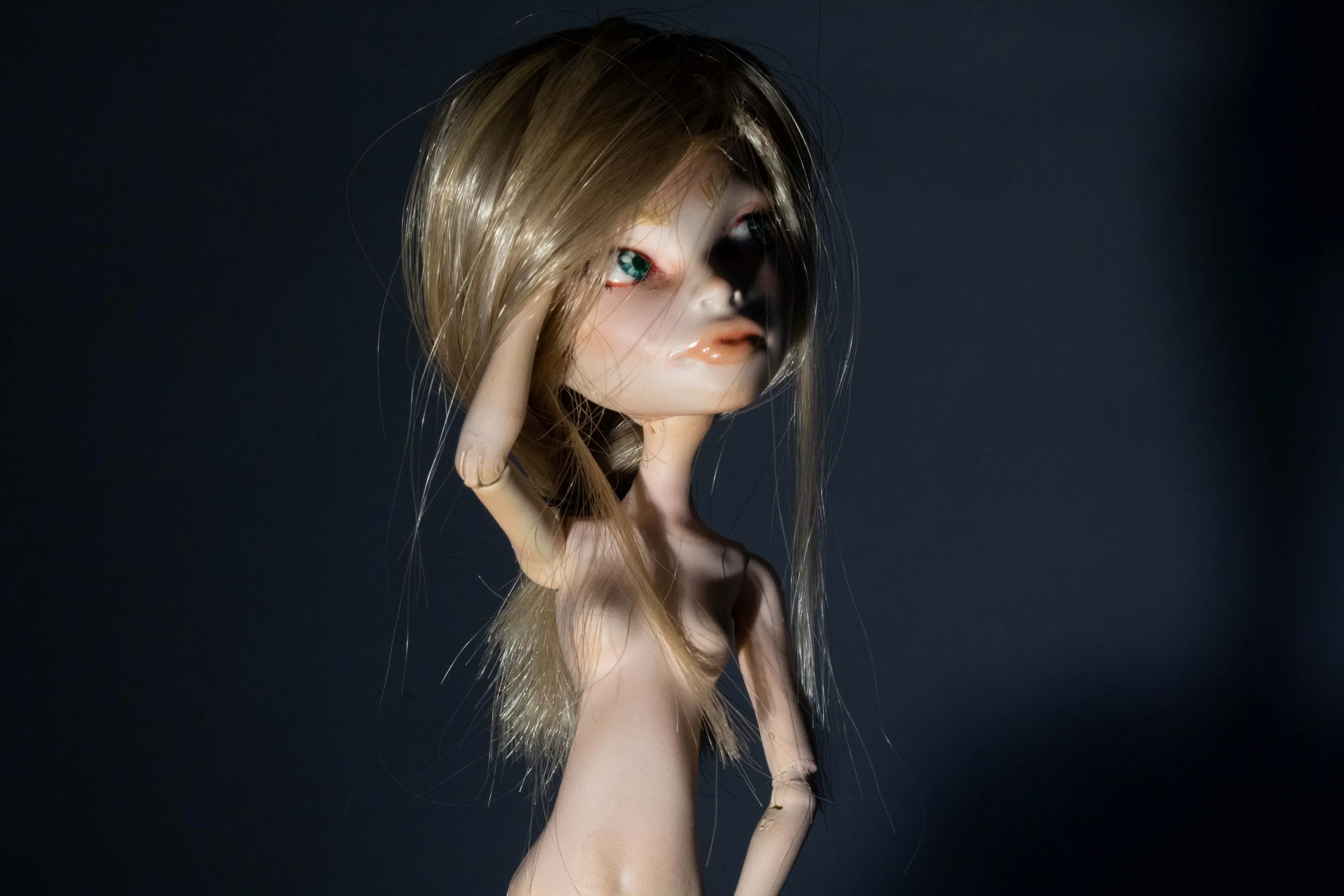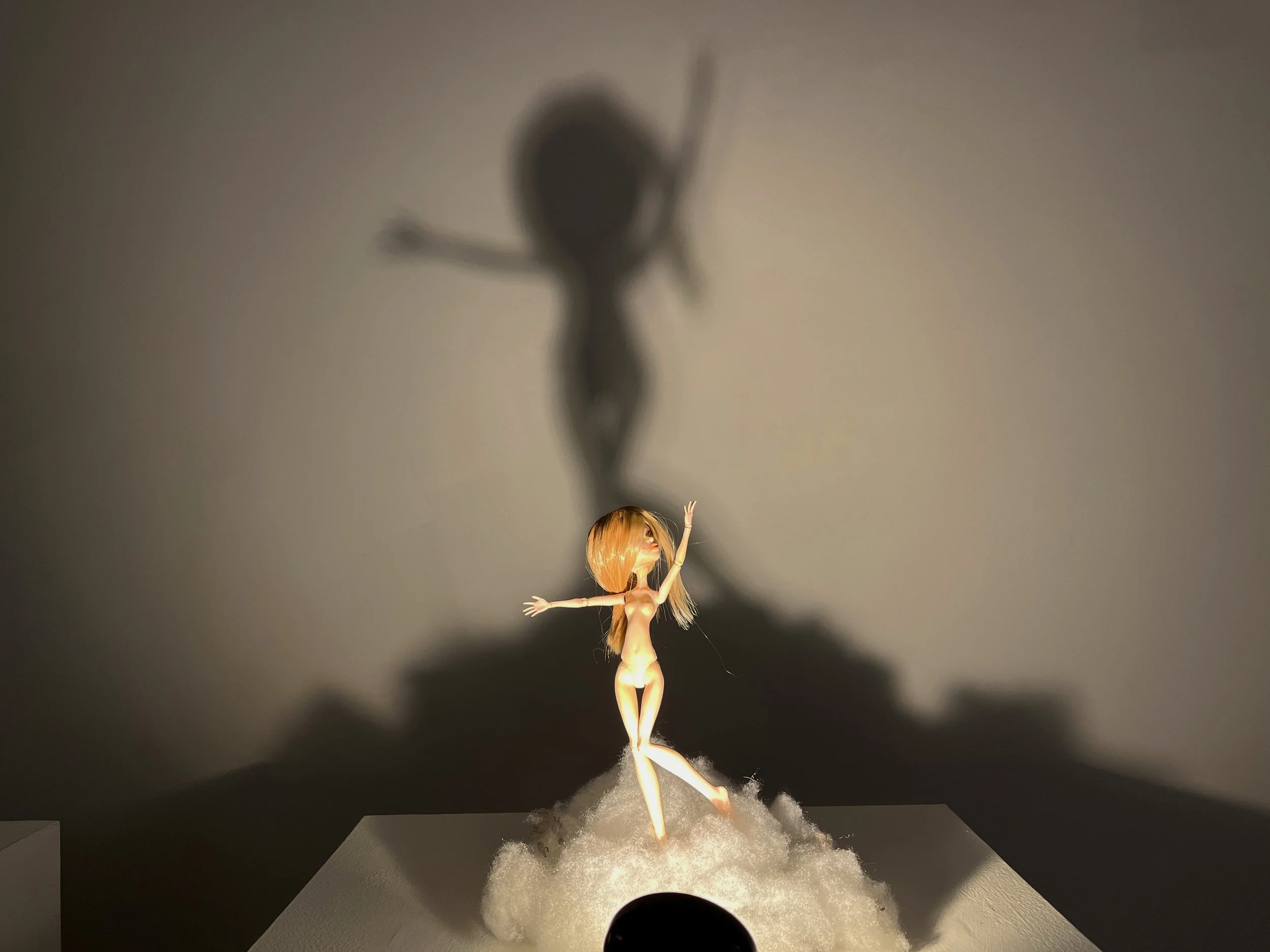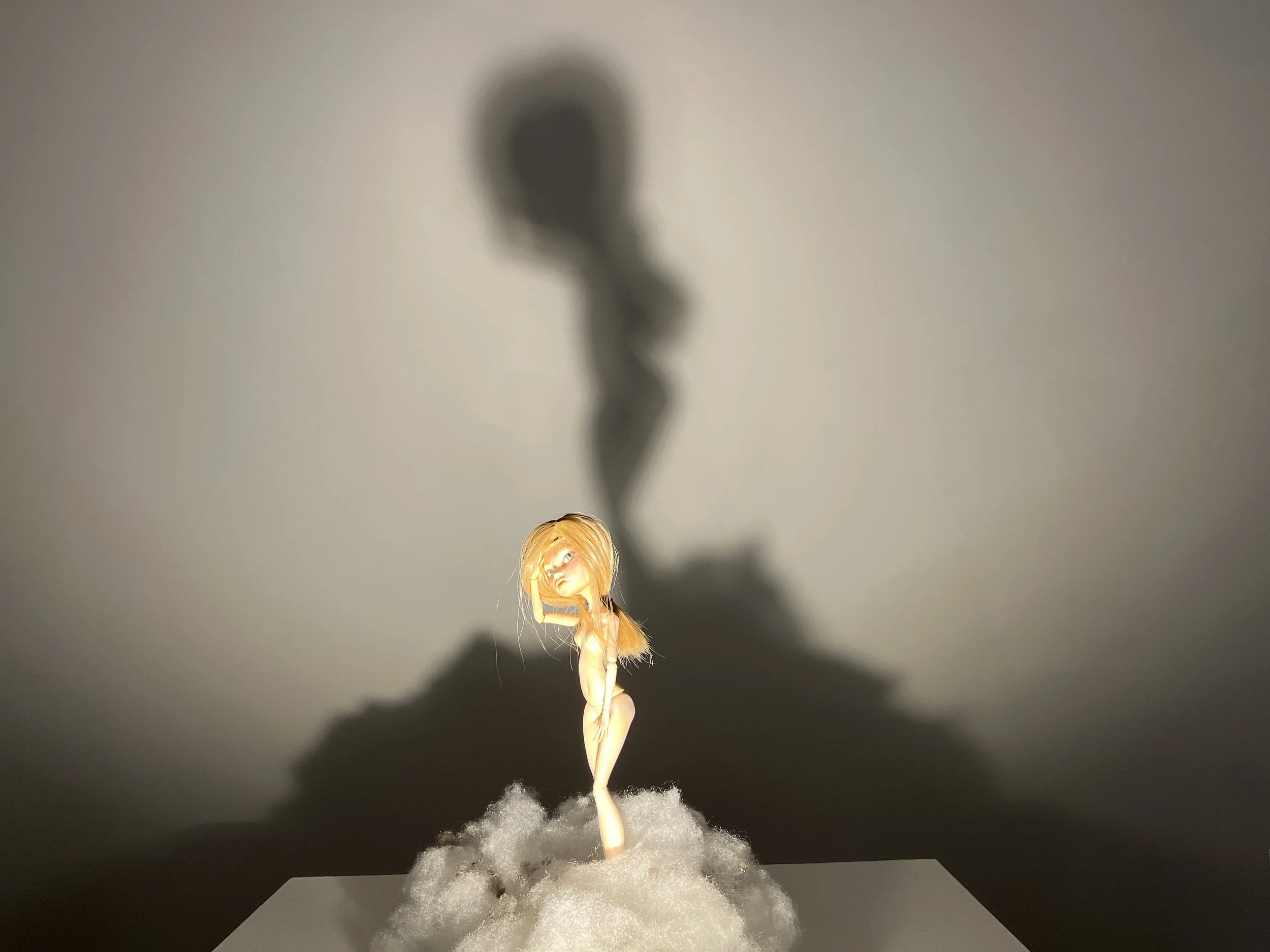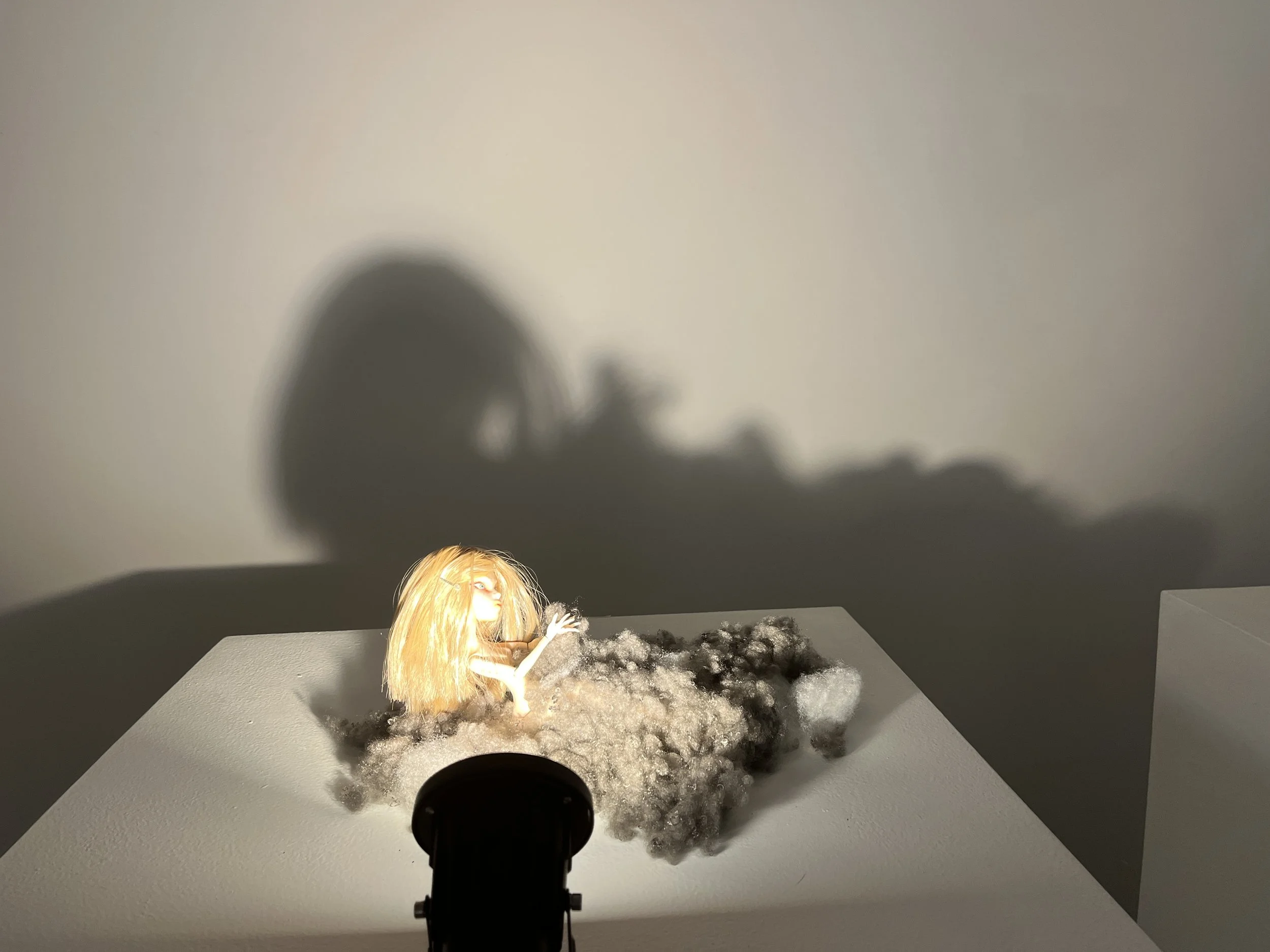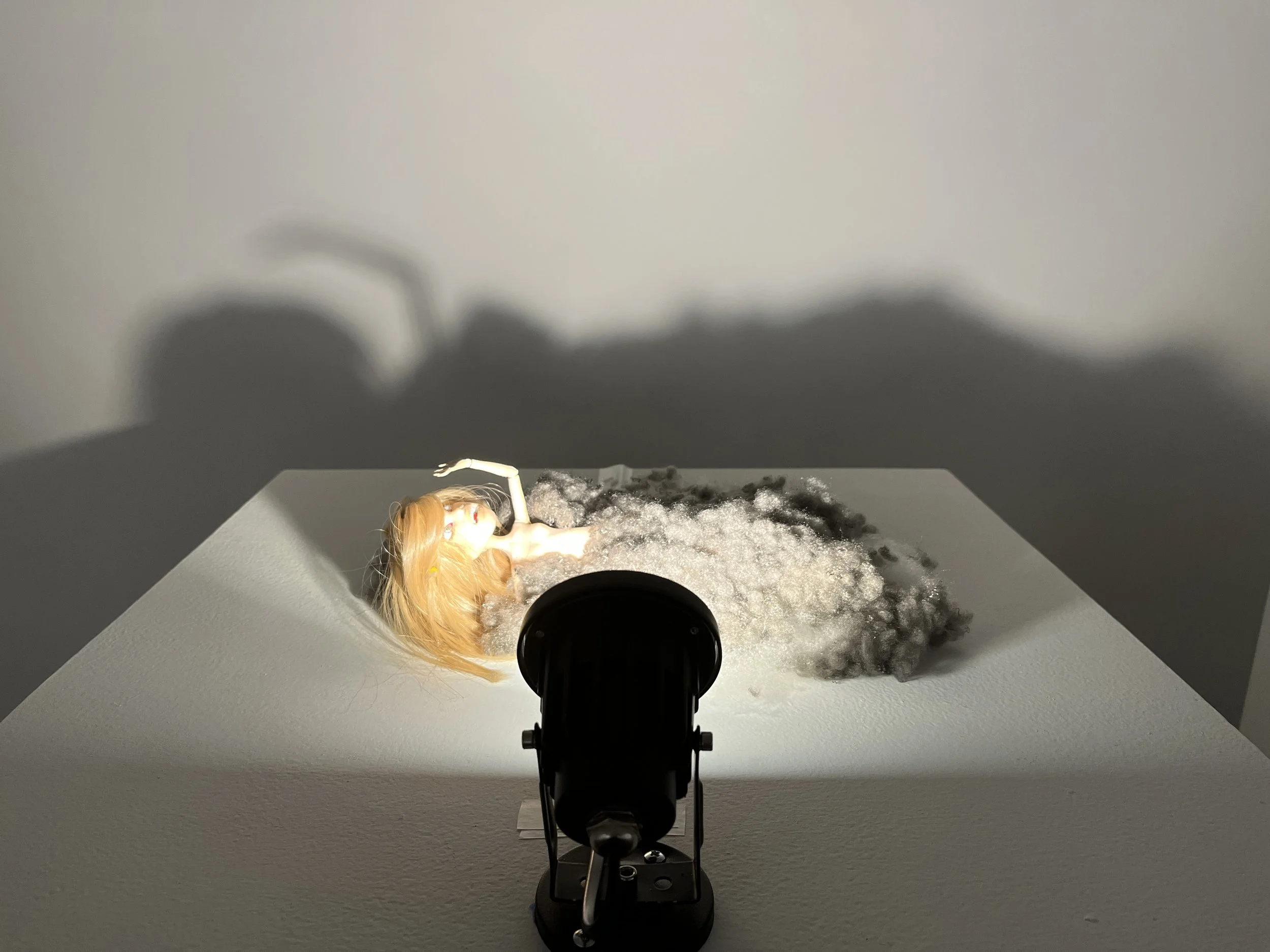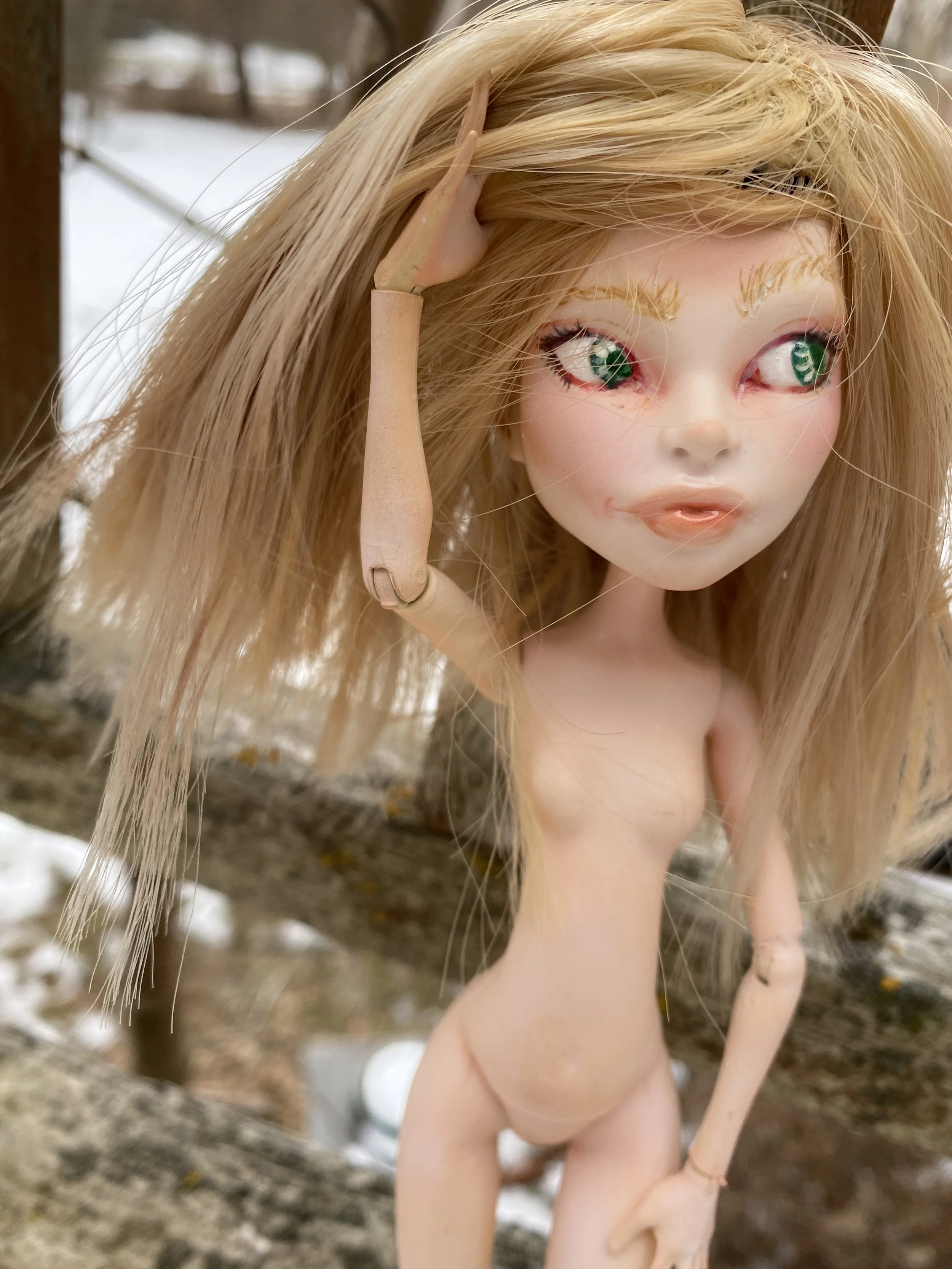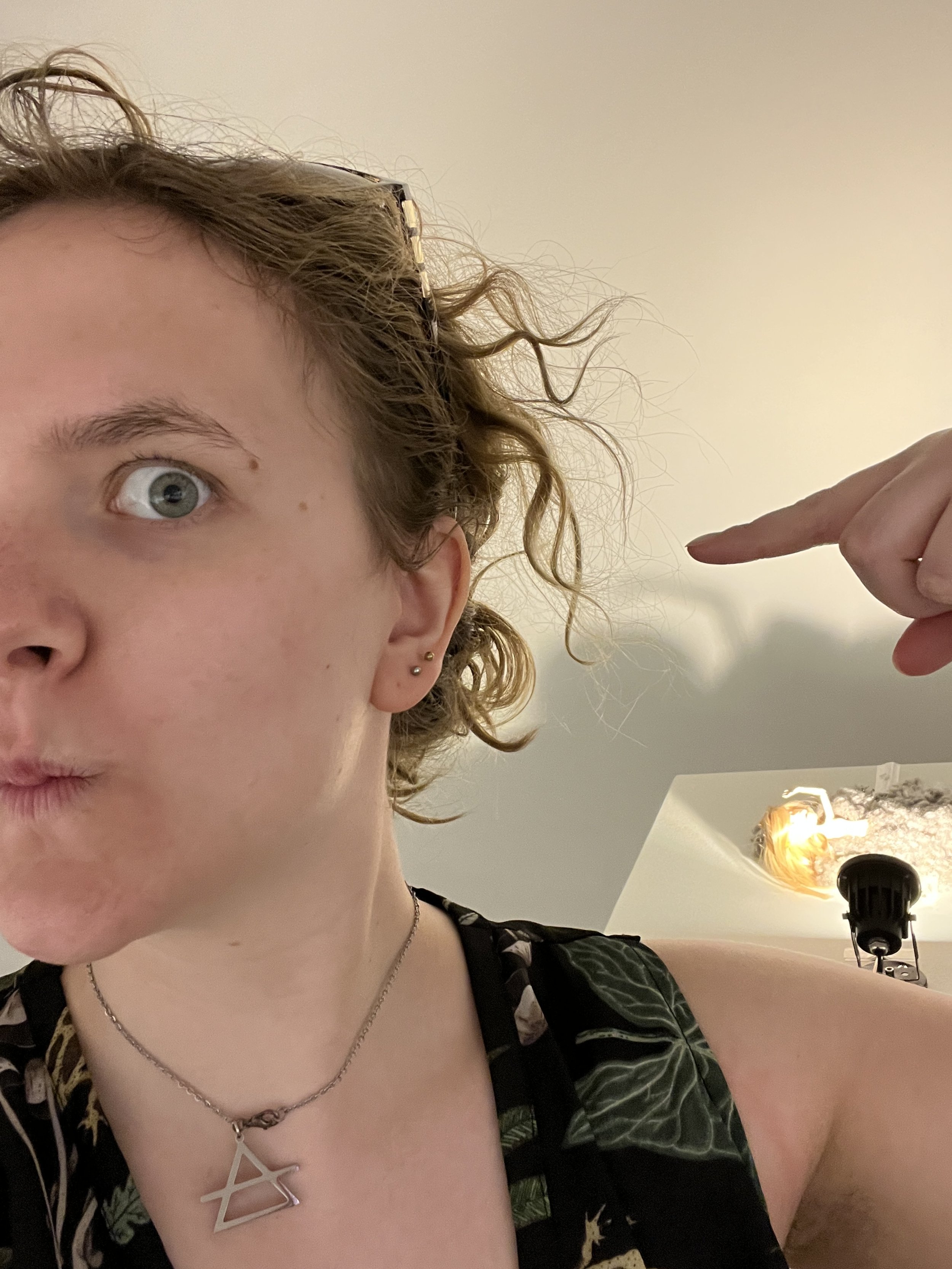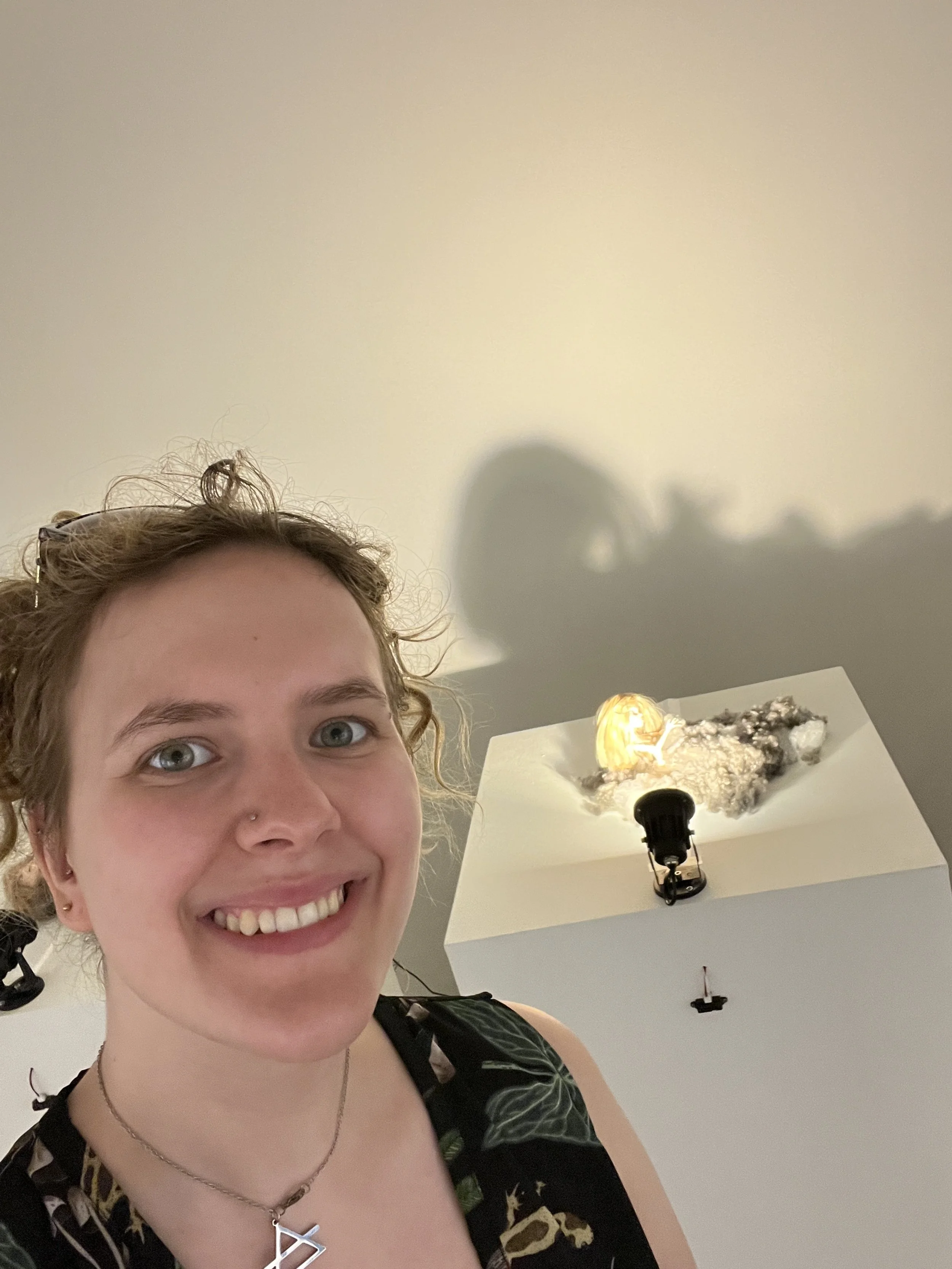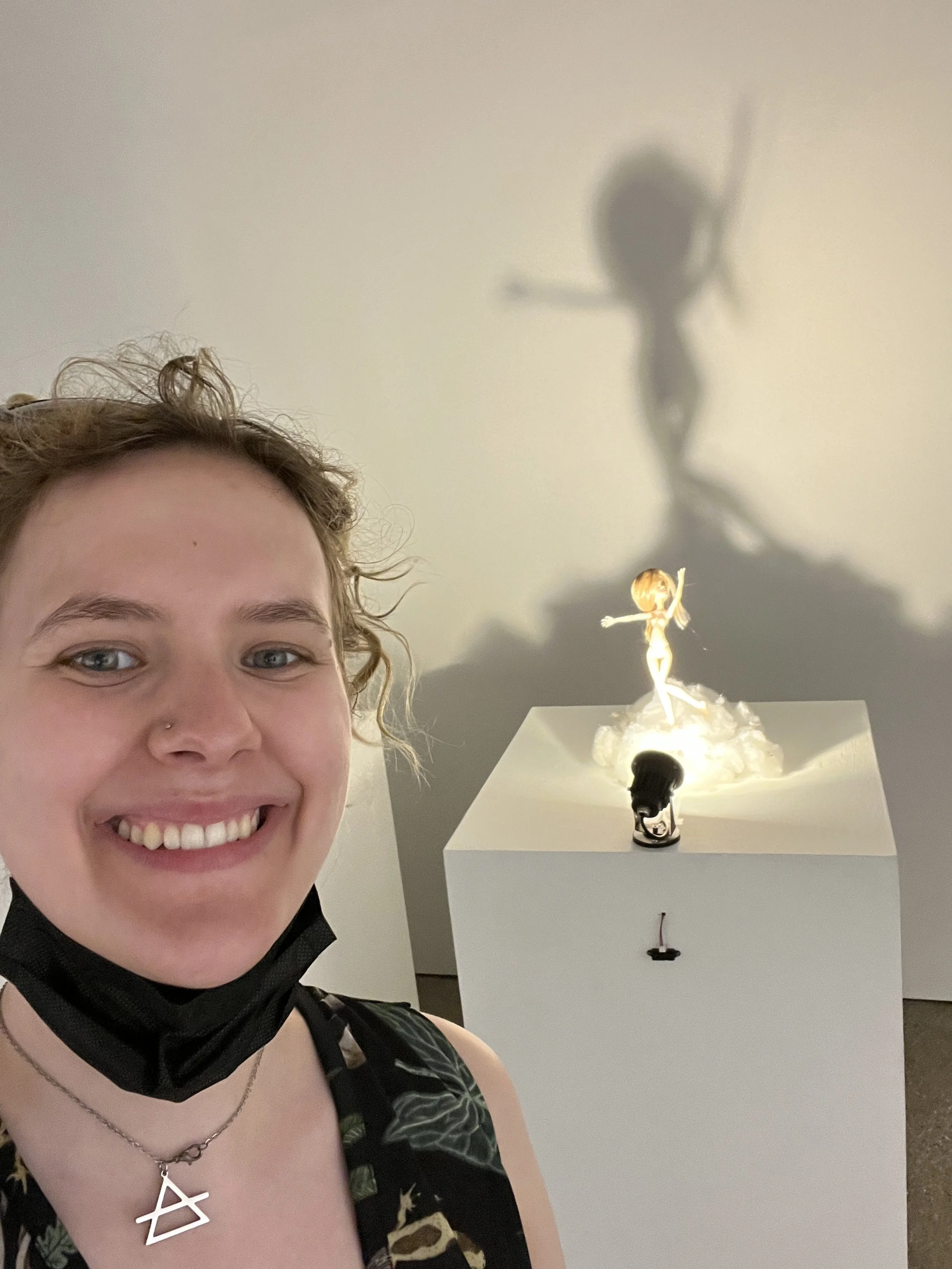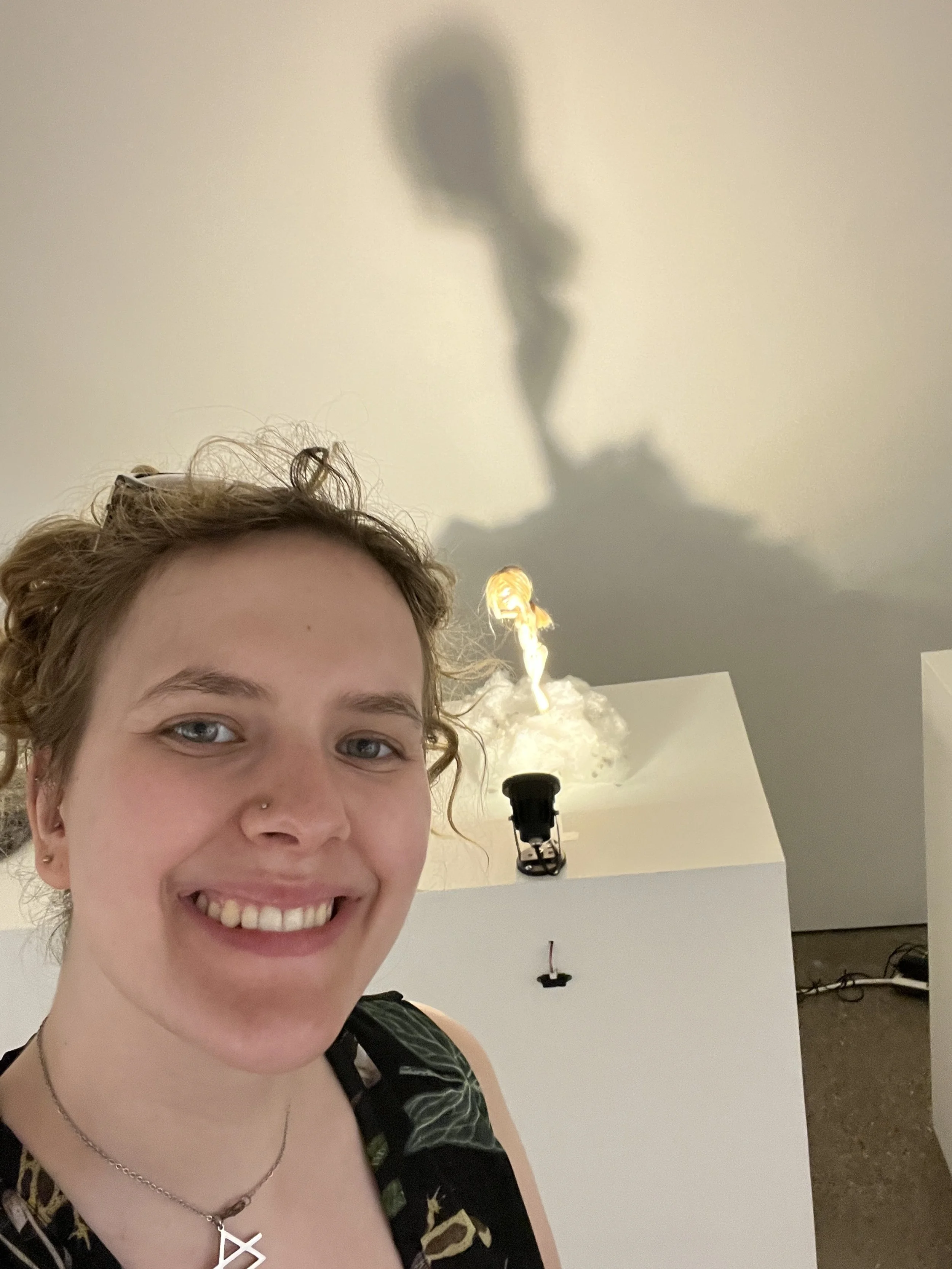Thesis
Winter 2022
“The Transition Process”
This interactive piece explores the different concepts relating to the subconscious and realizations about change.
Sensors
Demonstration of how the sensors work.
These are proximity sensors. If a person walks between 3 feet to about 1 foot in front of the sensor, the light will be triggered to turn on, projecting the shadows.
Soundscape
The music playing on repeat in the background of the piece is a collection of different sounds to emulate the different emotions and how the brain processes these emotions.
The dolls in this artwork represent personified emotions, while the soundscape depicts an inner monologue. Lighting emphasizes the magnitude of these emotions, helping the audience to visualize and experience a human reaction and the mental process of change.
FAQs
-
Each of these dolls are personified versions of the character’s emotions. Although they are completely different, there are some similarities that can be seen in order to tie each of them not only to the character but to each other. The body positions and the facial expressions of each of these dolls are different while having some similarities to each other because they have specific ties to the character’s mannerisms.
Although there were many reasons why I wanted to use dolls to represent the personified versions of one character’s emotions, the main reason was because of my obsessive-compulsive disorder. From the time I was a child, I had always thought that any inanimate object, whether a doll or even my favorite pencil, had an identity of its own. I always felt I had a special connection with dolls. There were times I would do specific rituals at night to make sure they were okay because I thought their feelings would be hurt otherwise, or there might be repercussions. Having these compulsive actions as a kid has now developed into an obsession with dolls and using them to express my emotions.
Another aspect of dolls, as used in therapy, is they are a way for a person to project their feelings. Disassociation is often a problem with me. Disassociation occurs often when one feels as if they are having an out-of-body experience and views their lives from a third-person point of view. I do that with dolls. The idea of projecting one’s emotions onto an inanimate object is often called projective identification. It is useful when processing events that are either currently happening in a person’s life or have occurred in the past. Since disassociation and OCD are very prominent in my life, placing all of my conflicting emotions into the dolls is a way I can connect to the piece itself and the audience.
-
Although the dolls look amazing on the stands by themselves, the spotlighting allows for them to take on entirely different meanings. The lighting exaggerates the dolls’ features and magnifies their shadows on the wall behind each doll. Since the stands are about 12 inches from one another and about 24 inches from the wall, the shadows of each doll are about double the size of the actual dolls.
When a viewer walks up to the dolls, the sensor is triggered. The sensor is triggered when the viewer stands about 3 feet to 1 foot in front of the sensor. I did notice that the lighter the color shirt the viewer was wearing, the easier it was for the sensor to recognize them and trigger the lights to turn on.
While the dolls are meant to be a personified version of each emotion, the silhouettes can be seen to symbolize the effect the emotions have on the subconscious. The silhouettes also bring forth the idea of feeling overwhelmed and surrounded by conflicting emotions when confronting change. The silhouettes can also be thought of as the alter egos or the truest form of the character. They are representative of the character’s inner desires, similar to how Peter Pan’s shadow has been interpreted as his subconscious attitudes and desires.
-
A Soundscape is a collection of different sounds recorded from using every day objects to create an overall musical piece or an overall atmosphere to a larger artwork.
Different portions of the soundscape allow for the rhythmic energy of the piece to resonate with the audience. The fluidity of the transition between the “fear” through “excitement” portions of the soundscape forces the viewer to visualize how the main character’s inner monologue processes these particular emotions. While specific sounds match particular emotions, a low humming ties the other recording sounds together and fills in the spaces where other sounds are not heard. The humming fluctuates in volume and represents the ambient functioning of the brain. It is representative of the realm between thoughts and feelings.
Many of the sounds in the “fear” section make their way into other portions of the soundscape. Ranging from a heartbeat to different manipulations of flute and piano audio recordings, many of these sounds are placed in specific locations on the soundscape to contradict one another. Several of the sounds are recycled throughout the piece but are reversed or altered to match specific emotions. Similar to the dolls being the personified versions of the character’s emotions, the soundscape represents the internal monologue being exposed to the audience, the transcript of the subconscious processing new information.
Many times during new life changes, people have trouble processing new information and become overwhelmed. Their thoughts feel like they are on a loop, echoing off the walls of the skull. I wanted the soundscape portion of my overall piece to not be like the other two portions in that it serves as the undercurrent of the entire piece. Similar to that of a soundtrack for a psychological thriller, the soundscape is what holds the whole piece together. The repetition of the entire soundscape was important because the audience will hear new sounds every time they listen, and it mimics the character‘s thoughts on repeat.
Note: The information above are snippets from my thesis paper. If you want to know more information, please feel free to email me :)
Fear Doll
Confusion Doll
Curiosity Doll
Excitement Doll
Screenshot of full display from video
Curiosity Doll Test Shot
Attempting to give the Fear Doll's Shadow a High Five.
Selfie with Confusion Doll
Selfie with Excitement Doll
Selfie with Curiosity Doll


